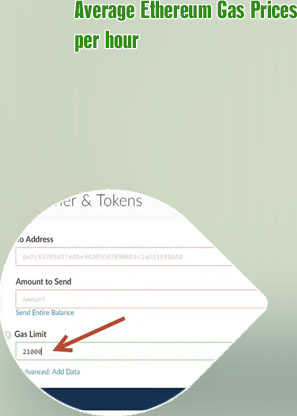

Gas fees on the Ethereum network have been a hot topic of discussion among users and developers alike. High gas fees can significantly impact the usability of the network and hinder the adoption of decentralized applications. In order to address this issue, we have compiled a list of 3 articles that provide valuable insights and solutions to help reduce gas fees on Ethereum.
Gas fees on the Ethereum network have been a major concern for users due to the high costs associated with transactions. To help address this issue, we have compiled a list of three articles that provide insights and solutions to reduce gas fees on the Ethereum network. These articles offer valuable tips and strategies for users looking to optimize their transactions and minimize the impact of gas fees on their activities.
Gas fees on the Ethereum network have been a hot topic of discussion among cryptocurrency enthusiasts and investors. As the network continues to grow in popularity, the fees associated with transactions have also increased, causing frustration among users. However, there are ways to lower gas fees on Ethereum and make transactions more cost-effective.
One way to reduce gas fees is by using layer 2 solutions such as Loopring or Optimism. These solutions allow users to conduct transactions off-chain, which can significantly lower the fees associated with on-chain transactions. By utilizing layer 2 solutions, users can enjoy faster and cheaper transactions on the Ethereum network.
Another way to lower gas fees is by using decentralized exchanges (DEXs) like Uniswap or Sushiswap. These platforms allow users to swap tokens directly with each other without the need for a centralized intermediary, reducing the fees associated with traditional exchanges. By using DEXs, users can save on gas fees and enjoy a more efficient trading experience.
Users can also lower gas fees by batching transactions together. By bundling multiple transactions into a single transaction, users can save on gas fees and reduce the overall cost of conducting transactions on the Ethereum network. This method is particularly useful for users who frequently conduct multiple transactions.
Gas fees are an essential concept for Ethereum users to grasp in order to navigate the world of decentralized finance. Gas fees represent the cost of performing transactions on the Ethereum network, and they are crucial for ensuring that transactions are processed in a timely manner. For those new to the world of Ethereum, understanding gas fees can be a daunting task, but with the right guidance, users can navigate this complex ecosystem with ease.
One key factor to consider when dealing with gas fees is the concept of gas limit and gas price. The gas limit refers to the maximum amount of gas that a user is willing to spend on a transaction, while the gas price determines how quickly the transaction will be processed. By setting the appropriate gas limit and gas price, users can optimize their transaction fees and ensure that their transactions are processed in a timely manner.
Additionally, users should be aware of the factors that can impact gas fees, such as network congestion and the complexity of the transaction. By staying informed about these factors, users can make informed decisions about when to execute transactions and how to minimize gas fees.
Overall, understanding gas fees is essential for Ethereum users who want to navigate the world of decentralized finance successfully. By mastering this concept, users can optimize their transaction fees and ensure that their transactions are processed efficiently.
Ethereum has gained popularity in recent years as a leading platform for decentralized applications and smart contracts. However, one common concern among users is the high gas fees associated with transactions on the network. Gas fees are essentially the cost of running transactions or smart contracts on the Ethereum network, and they can vary depending on network congestion and other factors. Fortunately, there are several strategies that users can employ to save on gas fees and optimize their Ethereum transactions.
Use Gas Fee Tracking Tools: There are several websites and platforms available that allow users to track and monitor gas fees in real-time. By staying informed about current gas prices, users can choose the best times to make transactions and avoid paying excessive fees.
Opt for Off-Peak Hours: Ethereum network congestion tends to peak during certain times of the day, resulting in higher gas fees. By scheduling transactions during off-peak hours, users can take advantage of lower gas prices and save money in the process.
Utilize Layer 2 Solutions: Layer 2 solutions such as Loopring and zkSync offer alternative scaling solutions that can help reduce gas fees and improve transaction speeds on the Ethereum network. By leveraging these solutions, users can enjoy lower costs and faster transactions compared to traditional on-chain transactions.
Consolidate
